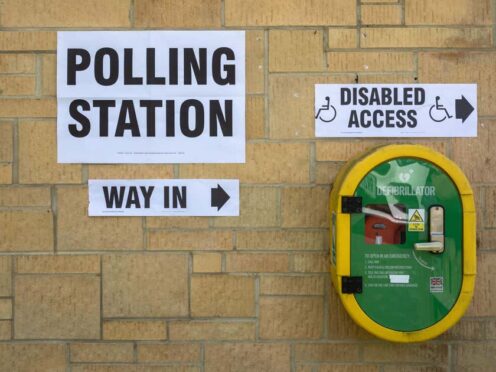Accessibility has been “an afterthought” in the election period, both disabled people and campaigners have said, with concerns around manifestos and how the need for ID could prove challenging for some voters.
Disability equality charities said announcements without captions or British Sign Language (BSL) interpreters, and some manifestos not being published in accessible formats show politicians and parties are “repeating the same mistakes”.
Neither the Conservatives nor Reform UK published easy read, braille or large print versions when they first launched documents setting out pledges for their campaigns earlier this month.
The Tory party website appeared to have been updated this week with accessible versions, but charities noted these developments have come “so late into the campaign”.
Louise Rubin, head of policy and campaigns at Scope, said a lack of accessibility in manifestos is “very frustrating”.
She said: “One in four of us are disabled and this failure means many people now won’t be able to read and digest what’s being put forward by each party before casting their vote.
“There is no reason why accessible formats can’t be made available straight away. Accessibility is not a new concept – why is it still an afterthought?”
James Taylor, executive director of strategy at the charity, said: “We have a message for parties, candidates, broadcasters and councils. This is simply not good enough.
“Political parties must learn these lessons and stop repeating the same mistakes.”
The organisation also pointed out party broadcasts and debates being held without BSL interpretation.
When he announced the election in May, Prime Minister Rishi Sunak was accused of excluding the deaf community by not having a sign language interpreter with him.
The hearing charity RNID said what had happened was “not good enough” and called for it to be “the last time British Sign Language (BSL) users are left behind”.
It has since written to both Mr Sunak and Labour leader Sir Keir Starmer “to commit to being accessible to deaf people after the election, starting from day one”, by ensuring they have a registered BSL interpreter for their speech on July 5.
Michael Quinlan, advocacy manager at RNID, said the tone has been set when “87,000 deaf people who use BSL” had been effectively cut off from “sharing a moment of national importance”, although he welcomed “more accessible manifestos than previous elections, with more content captioned and BSL translated”.
Sense, which supports people with complex disabilities which can include learning disability, physical disability and autism, said its own research carried out in March had suggested nearly one in five people with such disabilities did not have the photo ID they need to be able to vote.
The charity said more than a third of people with complex disabilities felt the introduction of photo ID had put them off voting as it is an additional barrier to doing so.
Challenges in accessing a polling booth on July 4 are also a concern for many disabled people, campaigners said.
Richard Luke, from Coventry, lives with cerebral palsy and said while he feels things have improved slightly in terms of voting accessibility, “there are still issues, especially for people with sensory impairments”.
He added: “I have personally faced barriers. I had to vote outside a polling station because I couldn’t get my wheelchair inside. It feels like accessibility is an afterthought in the voting process.”
Scope’s own research found other examples of people having to vote outside because a polling station was not accessible, being allocated polling stations with no accessible parking or which have inaccessible or damaged footpaths.
Meanwhile, Sense’s polling of 1,000 people with complex disabilities in the UK found that nearly half (47%) felt disabled people and the issues they face were not important to political parties, while a similar proportion felt politicians do not do enough to engage disabled people to secure their vote.
Sense chief executive Richard Kramer said: “This comes down to the very basics. Manifestos must be accessible to everyone, in accessible formats such as easy read, braille and BSL formats.
“Yet only now, so late into the campaign, are we seeing parties publishing accessible versions and very little effort to promote them. It feels like an afterthought.
“We have seen party broadcasts and debates without BSL interpretation, and now with election day fast approaching, we know some disabled people fear the challenges that some polling stations will bring, such as lack of ramp access and inaccessible formats.
“And this amongst the backdrop of the requirement for voter ID, which we know is another barrier to access.”
